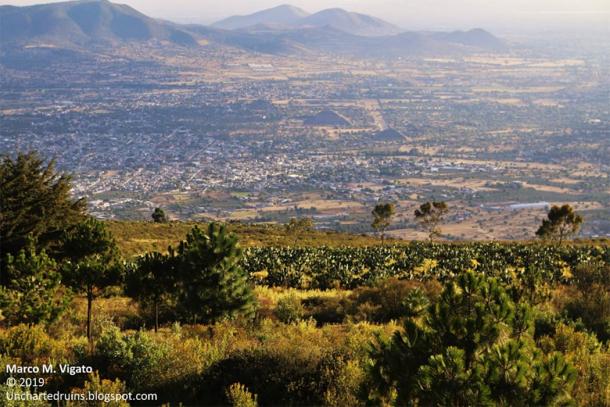Teotihuacan was by the fifth century AD the largest city in the American continent and one of the largest and most populous in the western hemisphere. Often called the ‘Rome of America’, its cultural and political influence extended from the north of Mexico to the southern Maya lands of Honduras and Guatemala. Yet, surprisingly little is known of the origins of the great metropolis on the altiplano, laying a mere 50 kilometers to the northeast of Mexico City.

View of Teotihuacan in Mexico ( Leonid Andronov / Adobe Stock )
The earliest Aztec legends describe Teotihuacan as the place where men became gods and the present Sun was born over 5,000 years ago. With its three immense pyramids – the largest, called the Pyramid of the Sun, covering almost the same exact base area as the Great Pyramid of Giza – the city appears to have been sprung as if out of nowhere in the first centuries of current era. Were the mysterious Olmecs the original builders of Teotihuacan? Or an even earlier race that, as the earliest Aztec legends suggest, arrived on the coasts of Mexico from a land across the Atlantic Ocean thousands of years ago?

The view over Teotihuacan from the summit of Cerro Gordo. (Image: © Marco M Vigato)
Richard Thornton’s 1970’s Expedition
American architect and independent researcher Richard Thornton’s article and videos describe his own explorations in the area around Teotihuacan and Cerro Gordo (the large volcanic mountain that dominates the pyramids site) during the decade of the 1970’s. On his website Thornton claims that he did not realize the full significance of his discoveries until several decades later, when the first high-resolution satellite images of the area became available. What he discovered was nothing short of extraordinary: A huge fortified ancient settlement or acropolis, sitting right on the summit of Cerro Gordo and overlooking Teotihuacan, complete with massive megalithic stone walls, processional causeways, aqueducts and pyramids. Here are some of the most startling discoveries that Thornton presents in his videos:
- Various buried mounds aligned with the Avenue of the Dead, the main ceremonial avenue of Teotihuacan, and the two massive pyramids of the Sun and Moon
- Evidence of a very large ancient settlement on the slopes of Cerro Gordo, as testified by a relative abundance of ceramic material, pottery and obsidian shards
Like this Preview and want to read on? You can! JOIN US THERE ( with easy, instant access ) and see what you’re missing!! All Premium articles are available in full, with immediate access.
For the price of a cup of coffee, you get this and all the other great benefits at Ancient Origins Premium. And – each time you support AO Premium, you support independent thought and writing.
Marco M Vigato , a native of Italy, lives in Mexico City and has traveled extensively across Europe, the Middle East, North Africa, South-East Asia, North and South America. Much of his recent research has focused on the megalithic remains of ancient Mexico and Mesoamerica.
Top Image: Teotihuacan Pyramid of the Moon with Cerro Gordo behind it ( Galyna Andrushko /Adobe Stock)
Related posts:
Views: 0
 RSS Feed
RSS Feed

















 December 5th, 2020
December 5th, 2020  Awake Goy
Awake Goy  Posted in
Posted in  Tags:
Tags: 
















